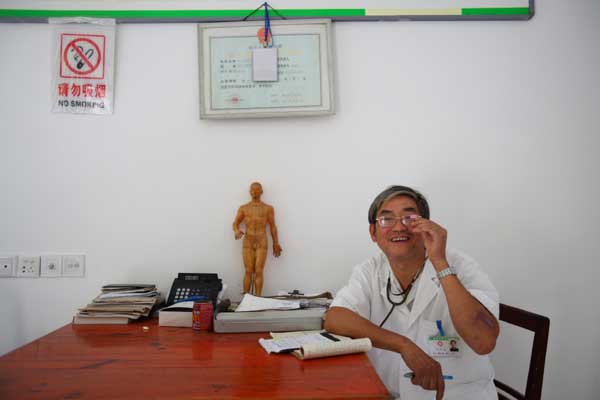Society
Radical treatment for healthcare
By Hu Yinan (China Daily)
Updated: 2010-09-16 08:16
 |
Large Medium Small |
Rather than being offered permanent employment (a core component of the cooperative medical system under the planned economy), grassroots health workers in Anhui are now contracted to avoid egalitarian practice and encourage good performance.
Provincial authorities have also taken control of the bidding for, buying, supplying and distributing of all 479 medicines on the compiled essential drugs list (it has 172 more drugs than the State formulary of basic health insurance), which was previously handled by physicians in towns and villages.
The measures helped cut the prices by about 50 percent in the pilot sites during the first half of this year, according to Anhui's health bureau.
Gao hailed the reform as "orderly, powerful and efficient" in regulating drug costs, combating irrational drug use and streamlining the personnel structure of grassroots health providers.
Money injection
To continue the reform, the province will need to spend roughly 1.7 billion yuan a year. The vast majority will go to township health centers, while the rest will be spent in village clinics run by 67,000 rural doctors. However, significant challenges remain and as Gao puts it: "Any reform is a radical adjustment of interests our greatest problem is the people problem. Local officials historically governed township health clinics in Anhui and their relatives too often occupied a majority of posts there.
"Our investigations found that although many of these clinics had 20 to 30 staffers, they relied on just three to four people who actually worked," he said. "The others were illiterate or barely finished elementary school. No sustainable development can be achieved without abolishing this personnel system."
Even after failing to obtain the proper accreditation, the sheer number of redundant staff, particularly in poor and remote counties, suggests they cannot simply be let go.
For example, half of the grassroots health staff in Guzhen county were asked to leave their jobs under the pilot initiative - but only 13 actually did so. About 340 workers were instead put on a three-year paid probation period.
In an August report to provincial authorities, county officials argued that the compensation they need to pay for redundancies - an estimated 5.4 percent of the county's 2010 financial revenue - is too great a burden.
To avoid the issue spiraling into a crisis, Anhui authorities will inject 400 million yuan this year to pay off more than 20,000 unaccredited medical personnel, some of whom will receive administrative posts instead of being fired.
"I'm not even going to talk about the money problem the utmost concern is to ensure stability," said Gao. Yet, most of the challenges raised by the reform have to do with money.
Internal half-year self-assessments provided to China Daily show that 13 of the 32 pilot sites listed limited finances as the foremost barrier to further reforms.
Some also complained about the mounting debts of township health clinics due to over-expansion in recent years, an issue that has not been addressed by the reform.
"Grassroots health institutions in the 32 pilot sites carry a debt of more than 400 million yuan. Across Anhui, that figures is about 1.4 billion yuan," said Gao.
"The issue still hasn't been addressed too well but we're looking into it," he said, before stressing that the initiative for the entire province "will be proven effective in half a year".
